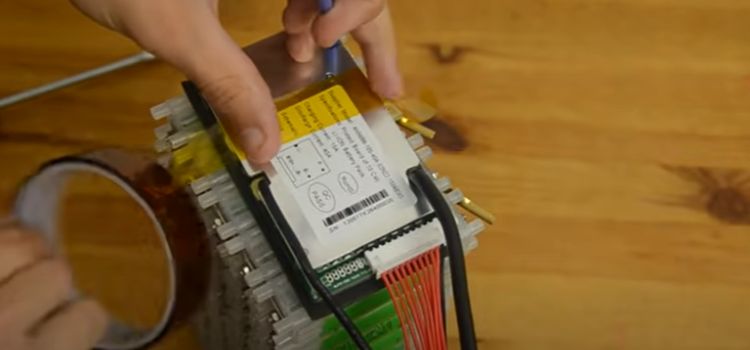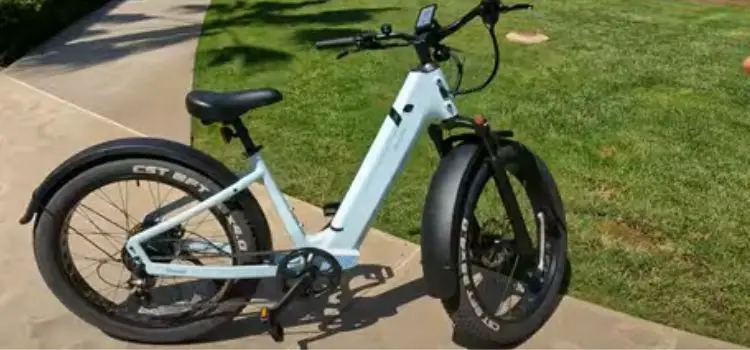How to Reset Your Electric Bike Battery?
As an Amazon Associate I earn from qualifying purchases.
Electric bikes (e-bikes) have revolutionized the way we commute and explore the outdoors, providing an eco-friendly and efficient mode of transportation.
However, over time, e-bike batteries may experience issues that affect their performance. One effective way to address these issues is by resetting the electric bike battery management system (BMS).
In this comprehensive guide, we will delve into the importance of the BMS, common signs that indicate a need for a reset, and provide step-by-step instructions for both external and internal resets.

Understanding the Electric Bike Battery Management System (BMS)
Before delving into the reset process, it’s crucial to understand the role of the Battery Management System (BMS) in an electric bike battery. The BMS serves as the brain of the battery, ensuring optimal performance, safety, and longevity. It monitors and regulates various parameters, including cell voltage, temperature, state of charge, and charging and discharging processes.
Signs Your Electric Bike Battery BMS Needs a Reset
1. Decreased Range
One of the primary indicators that your electric bike’s Battery Management System (BMS) may need a reset is a noticeable decrease in the range or distance your e-bike can travel on a single charge. If you find that your e-bike’s range has significantly diminished compared to when it was new, it could be a sign that the BMS needs resetting.
2. Erratic Charging Behavior
If you observe irregularities in the charging behavior of your e-bike battery, such as the battery not fully charging despite being connected to the charger for an extended period or the charging process completing unusually quickly, it suggests a malfunctioning BMS that requires resetting.
3. Inconsistent Performance
A malfunctioning BMS can lead to inconsistent performance on your electric bike. You may notice fluctuations in power delivery, uneven acceleration, or the motor cutting out unexpectedly during rides. These inconsistencies in performance can often be attributed to issues with the BMS and may necessitate a reset to restore optimal functionality.
4. Overheating Battery
Excessive heat generation during charging or discharging cycles can indicate BMS-related issues. If your electric bike battery becomes abnormally hot during use, it is a sign that the BMS is not effectively managing the battery’s temperature, potentially requiring a reset to resolve the issue and prevent further overheating.
5. Unbalanced Cell Voltages
The BMS is responsible for monitoring and balancing the voltage of individual cells within the battery pack. If you observe significant disparities in voltage levels among the cells, it could be a sign that the BMS is failing to perform its balancing function adequately. Resetting the BMS helps recalibrate cell voltages and restore balance to the battery pack.
6. Premature Battery Degradation
If your electric bike battery is exhibiting signs of premature degradation, such as a noticeable reduction in capacity or increased internal resistance, it indicative of underlying issues with the BMS. Resetting the BMS can help address these issues and potentially extend the lifespan of the battery.
7. Unexpected Power Loss
Sudden and unexpected power loss while riding your electric bike, even when the battery indicates a sufficient charge level, can be a concerning indication of BMS-related issues. Resetting the BMS helps rectify any underlying faults causing the power loss and restore consistent power delivery to the motor.
8. Error Codes or Warning Lights
Many modern electric bikes are equipped with diagnostic systems that can display error codes or illuminate warning lights to indicate potential issues with the battery or BMS. If you encounter any error codes or warning lights related to the battery system, it’s essential to investigate the cause promptly, as they signal the need for a BMS reset to resolve the underlying issue.
Now that you’ve identified potential signs of BMS issues, let’s explore how to reset your electric bike battery to breathe new life into your two-wheeled companion.
External Reset Process
The external reset process for an electric bike battery’s BMS involves a series of steps aimed at restoring optimal functionality and performance. Here’s a detailed breakdown of the external reset process:
Step 1: Gather the Tools
Before beginning the external reset process, gather all the necessary tools and materials. You’ll need:
Ensure that you have a clean, well-lit workspace to perform the reset safely.
Step 2: Procure Materials
Collect all the required materials mentioned above. Double-check to ensure you have everything readily available before proceeding to the next step.
Step 3: Create an Adapter
Constructing an adapter is essential for facilitating the reset process. Follow these sub-steps:
Creating a well-made adapter is crucial for safe and effective reset procedures.
Step 4: Plug the battery charger into the Adapter
Once the adapter is ready, connect it to the battery charger. Take the utmost care to ensure the wires are not touching each other and that they are correctly connected to the charger’s terminals.
Step 5: Insert the wires of the adapter into the correct terminals
After verifying the connections, it’s time to insert the wires of the adapter into the correct terminals on the discharge port of the electric bike battery.
Step 6: Reset the BMS
Initiate the BMS reset by following these final steps:
By following these steps carefully, you can effectively reset the BMS and restore optimal performance to your e-bike’s battery.
Internal Reset Process

The internal reset process for an electric bike battery’s BMS involves accessing the internal components of the battery pack and performing the reset procedure from within. Here’s a detailed guide on how to perform an internal reset of the BMS:
Step 1: Open the Battery Enclosure
Use appropriate screwdrivers to remove the screws securing the top cap or cover of the battery enclosure. Carefully set aside the screws in a safe place to prevent them from getting lost.
Step 2: Partially Extract the BMS Chip
With the top cap removed, you’ll gain access to the internal components of the battery pack, including the BMS chip. Gently slide out the BMS chip and associated wiring harnesses, taking care not to apply excessive force or damage any wires or connectors.
Step 3: Resetting the BMS
Once the BMS chip is partially extracted, follow these sub-steps to reset the BMS:
Step 4: Test Battery Functionality
After completing the internal reset procedure, it’s essential to test the battery’s functionality to ensure that the reset was successful. Follow these steps to test the battery:
Performing an internal reset of the BMS is a more involved process than an external reset but can be necessary if the issues with the battery cannot be resolved externally. By following the steps outlined above carefully, you can reset the BMS and potentially restore optimal performance to your electric bike battery.
Read: How Fast Does A 1000W Electric Bike Go
How Does the BMS Work in an Electric Bike Battery?

The Battery Management System (BMS) in an electric bike battery serves as a critical component that oversees and regulates various aspects of the battery’s operation. Its primary function is to ensure the safe and efficient operation of the battery pack. Here’s how the BMS works in an electric bike battery:
1. Protection
One of the key functions of the BMS is to protect the battery pack from potentially harmful conditions such as overcharging and overdischarging. It achieves this by monitoring the voltage and current levels of individual battery cells within the pack.
2. State of Charge (SOC) Calculation
The BMS continuously monitors the state of charge (SOC) of the battery pack. It calculates the SOC based on parameters such as voltage, current, temperature, and internal resistance.
3. Cell Balancing
To ensure uniform performance and maximize the lifespan of the battery pack, the BMS performs cell balancing. This process involves redistributing charge among individual cells to ensure that they maintain similar voltage levels.
4. Temperature Monitoring and Control
The BMS monitors the temperature of the battery pack to prevent overheating, which can lead to reduced performance and safety hazards.
5. Communication and Data Sharing
The BMS communicates with the electric bike’s controller and other components to provide real-time information about the battery’s status.
The Battery Management System (BMS) plays a crucial role in maintaining the safety, efficiency, and longevity of an electric bike battery. By continuously monitoring and controlling various parameters such as voltage, current, temperature, and SOC, the BMS ensures optimal performance and reliability of the battery pack. Understanding how the BMS works is essential for maximizing the lifespan and performance of electric bike batteries.
Conclusion
Resetting your electric bike battery’s BMS can breathe new life into your e-bike, address performance issues, and ensure a longer lifespan. Whether opting for an external or internal reset, following the step-by-step guide and understanding the BMS’s functions are crucial.
Always prioritize safety, adhere to manufacturer guidelines, and wear protective gear when handling electrical components. By taking charge of your e-bike’s battery health, you can enjoy smoother, more efficient rides for many miles to come.
Related Article: How To Start Electric Bike Without Key
Amazon and the Amazon logo are trademarks of Amazon.com, Inc, or its affiliates.





